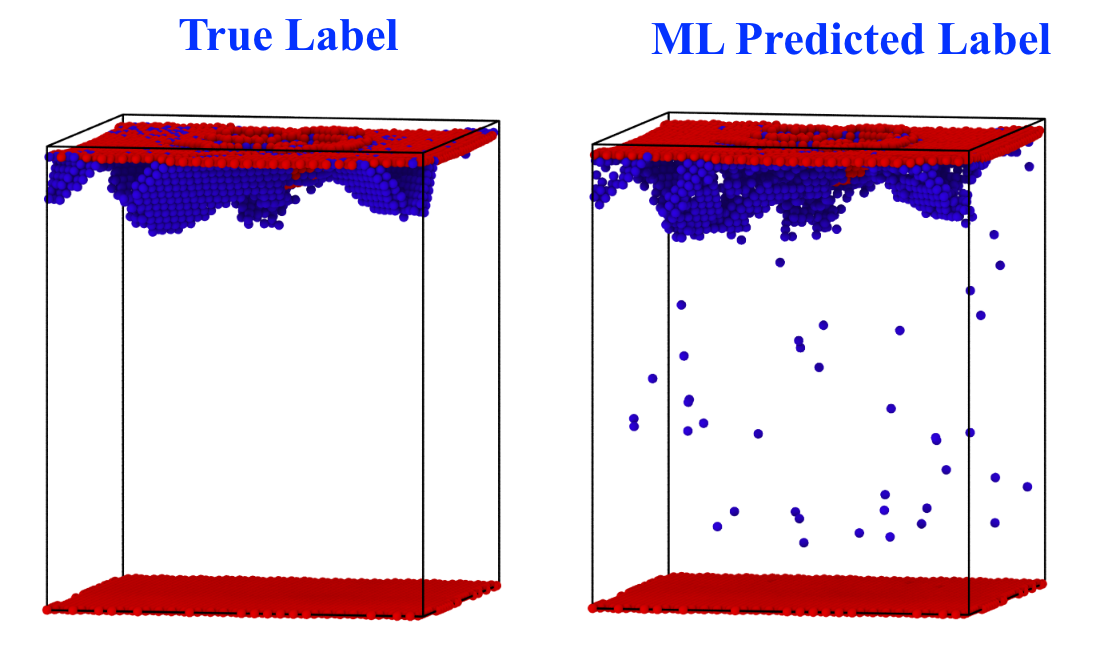ML-defect-analysis
Python-based Machine Learning tools to analyze damage in materials by classification of defects
Building and Running ML tools
The following command uses the supplied Makefile to compile a supplementary tool that reads a .xyz structure file and converts it into a list of feature vectors. These feature vectors are the primary input for the main defect-classification ML program.
make
This compiles a new executable c_feature, which takes two arguments -- The first argument is the name of the .xyz file to be read. The second argument is the name of the file where the computed feature vectors are written out. Create a training set from the Ni_train.xyz file with the following command
./c_feature Ni_train.xyz feature/train.txt
Next, create a test set from the Ni_test1.xyz file with the following command
./c_feature Ni_test1.xyz feature/test_1.txt
Once we have the training and test datasets, we call the primary ML program SVM_model.py on the two files we just created using the following command
python SVM_model.py feature/train.txt feature/test_1.txt
The primary output of the ML program is the output.xyz file, which contains predicted and true labels for the different atoms. This file can be viewed in any atomistic visualization program to measure the accuracy of the ML classifier. In this example, we get >99% accuracy in defect classification, as shown below.
For more detailed information about the input data, feature vector construction and the Support Vector Model used for defect classification consult the slides from the MAGICS Workshop, ML_Workshop_Slides.pdf in the training folder.
